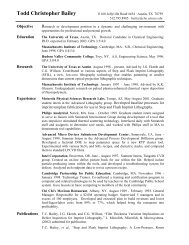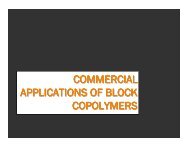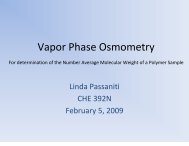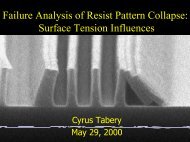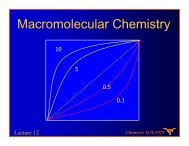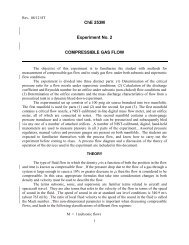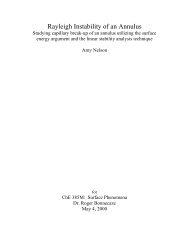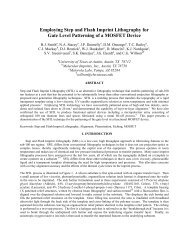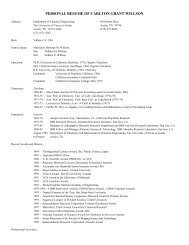Asymmetric fluid-structure dynamics in nanoscale imprint lithography
Asymmetric fluid-structure dynamics in nanoscale imprint lithography
Asymmetric fluid-structure dynamics in nanoscale imprint lithography
- No tags were found...
You also want an ePaper? Increase the reach of your titles
YUMPU automatically turns print PDFs into web optimized ePapers that Google loves.
⎛ n ⎞<strong>in</strong> the FFT that is not <strong>in</strong>dicative of the true signal I ⎜ ⎟ . A method is proposed⎝ λ ⎠for the m<strong>in</strong>imization of the distortion <strong>in</strong>troduced by K () t is described.The <strong>in</strong>tensity is normalized by a reference signal. It was observed thatthe normalization of the <strong>in</strong>tensity spectrum is very sensitive to the referencespectrum. The reference spectrum should be at zero gap or film thickness andthrough a material with the same <strong>in</strong>dex of refraction. However, if the referencecannot be taken for these conditions, the Fourier transform of the <strong>in</strong>tensityspectrum will conta<strong>in</strong> a false peak that belongs to the reference signal. This leadsto <strong>in</strong>correct detection of the true signal s<strong>in</strong>ce the magnitude of the reference isdom<strong>in</strong>ant <strong>in</strong> this case.Fortuitously, it was discovered that the <strong>in</strong>tensity signal when the gap is<strong>in</strong>f<strong>in</strong>ite, or practically speak<strong>in</strong>g when <strong>in</strong>terference is negligible, is identical to thatof zero gap. This allows the fiber optic probes to be placed at the measurementlocations and a reference to be taken through the quartz template. The template ismoved up from the substrate 100 microns and then a reference signal is captured.Without this capability, tak<strong>in</strong>g a proper reference is not trivial s<strong>in</strong>ce the referencemust be taken with the template removed and then the template must be put back<strong>in</strong>to to place before the experiment can proceed. However, <strong>in</strong> do<strong>in</strong>g this, thereference has been slightly modified because the <strong>in</strong>dex of refraction of quartz isnot unity, the sample placement has changed, and the measurement angle haschanged.Height and angle of the probe also make a difference when obta<strong>in</strong><strong>in</strong>g thereference signal. In the case of the reference, its period also changes as a functionof the optical path length. This is affected by the angle and focus of the signal.Changes to these parameters can affect the measured gap thickness or lead tofailure <strong>in</strong> the FFT. Thus, the reference should be collected at large gap where the96



